DAY 147 – BIRTHDAY CELEBRATIONS AT MURPHY’S HAYSTACK AND PT LABATT SEAL COLONY….
My day started with phone calls from the
grandchildren wishing me a happy birthday..
Willow wasn’t really interested in what presents I got, she was more
interested in what sort of birthday cake Poppy was going to make for me. So cute…..
We had planned to go check out Murphy’s
Haystacks this morning… They were about 40kms south of the popular fishing and
tourist town of Streaky Bay on SA’s Eyre Peninsular, they stand like a crooked
set of giant’s molars on a hilltop just 2km off the Flinders Hwy.
They are
amazing granite rock formations on private property. They really are quite amazing as there is
nothing else like them around, just lots of rolling hills and then these fine
examples of inselberg formations jutting up out of the ground.
It is believed that these granite rocks
got their name sometime between 1902 and 1914. Folklore has them named after a
Scottish agricultural expert who spotted the crop of remarkable rocks from the
local mail coach. The Scotsman obviously had a fertile imagination. “That man
must harrow,” he commented to his fellow travellers. “Look at all the hay he
has saved.” The original farmer of the land was a Mr.
Murphy and to this day the landmark is known as Murphy's Hay Stacks.
Of
course they’ve nothing to do with haymaking and are in fact great
examples of weathered pink granite inselberg formations (German for
“island-mountain”). They’re part of a larger mass called the Hiltaba Granite,
named for the Hiltaba Station in the southwest Gawler Ranges, under which much
of the mass lies.
The granite was originally hidden
deep in the Earth’s crust, probably some 7-10 km below the surface, but over
eons the overlying rocks have worn to be transported and deposited on the
surrounding continental shelf and inland basins.
The granite hills of the district,
including the haystacks, were buried by calcareous dune sand and gradual
weathering has shaped the granite to reveal the weird and wonky pillars and
boulders we see today.
Lichens, growing on the surface,
paint these rocks with bright red colour making them extremely colourful in the
bright sun. I can only imagine how
wonderful they would look with the
afternoon setting sun on them.
They are
terribly impressive and worth the detour to see. We spent a good hour walking around them all,
photographing them and talking with other tourists we met along the way.
We also ran into
Nick and Melissa again today, these are a couple of Queenslanders from the
Sunshine Coast, we met in Kunnurra and
we have met up with them now a couple of times on our trek around Western
Australia and then again, at Cedunna when they were camping in the same Caravan
Park as us….
Interesting
that, as before, the land, where these haystacks are standing, is owned by
Denis Murphy, a grandson of Murphy from 1900s.
He often visits his granite haystacks and loves to chat with the
tourists…. He had a good chat to Steve and filled him in on farming in the
region as well as his rather large family…. 10 children in all….
From here we
were off to the Point Labatt Conservation Park.
It is one of the only breeding sea-lion colonies on Australia’s mainland. From the clifftop vantage viewing area
above the colony, we were able to witness these mammals in their natural
habitat.
The Australian
sea-lions are found in no other country in the world and are one of our most
endangered marine mammals and rarest seals.
Point Labatt is the only place on the mainland where Australian seal
pups can be seen learning to swim, play and rest on the beach. It is also one of the few places in and
around Australia where they are protected from land predators and which provide
a safe environment for the sea-lion pups to develop.
Interestingly,
the females from this colony always return here to breed often using the same
patch of beach each year. Males wander
far and wide sometimes to colonies hundreds of kilometres away.
 |
| Mother Seal feeding her Pup |
 |
| This seal was calling for her Pup |
At Point Labatt,
pups are born every 18 months, mid winter one year, and then mid summer the
next. The pups weight around 7kgs at
birth. They depend entirely on their
mother’s milk for the first year. After
that they start chasing and occasionally catching fish. Bay sea-lions take to the sea for the first
time around 4 weeks of age.
It was probably
one of the highlights of my day to stand above this colony and watch the
sea-lions, sunbathing, swimming, playing and we even got to see a Mother
sea-lion feeding her pup. We also
watched a couple of the pups playing in one of the rock pools on the rocky
ledge. All very fascinating and held up
captive for a couple of hours
By the time we
had finished watching these beautiful animals it was after 1pm, so as we were
all feeling a little peckish, we headed for Sceale Bay where we had planned on
having a picnic lunch.
 |
| Sceale Bay - our picnic lunch stop |
It too was a lovely bay, with a beautiful sandy beach overlooking turquoise and blue water, stunning scenery. Unfortunately our experience in South Australia so far is that they do not have a lot of suitable picnic areas and their rest areas have no toilets. This bay had one very low picnic table out in full sun…. They just don’t seem to have shelter sheds unless they are on the beach over fish filleting tables.
Never the less,
there was a nice cool breeze, so we enjoyed our picnic before taking off to do
the Westall Way Loop Drive.
Without doubt
Westall Way is one of Streaky Bay's best kept secrets. It has the added advantage of being a
"ring road" and so you don’t cover the same ground twice. Dotted along Westall Way we
found sandy beaches, rugged limestone
cliffs, pleasant bays and inlets, striking
granite boulders covered in golden lichens, secluded granite pools and quite
striking seascapes with foaming white breakers
.
There is Tractor Beach, High Cliff, the
surfing beach known as the Granites, the Smooth Pool which is reputed to be an
excellent fishing spot, Point Westall,
which was sighted and named by Matthew Flinders on 5 February 1802, after a
landscape painter who was one of his crew on board the Investigator, the white sand dunes at Yanerbie which lie to
the south of Smooth Pool, and Speeds Point and Sceales Bay.
We approached Westall Way Loop Road from
the southern end, so Yanerbie was our first port of call. Yanerbie was a long stretch of beach lined
with massive sand dunes, which would be great to sand surf down. The beach was covered in layers of washed up
sea grass and way too cold for us to want to swim there.
Then it was on to Speed Point which is fronted by a 100 m wide intertidal rock platform, with wave breaking heavily across the platform. Spectacular scenery.
 |
| Smooth Pool |
Smooth Pool
itself is an eroding granite shelf that faces the full force of local westerly
weather systems. The outcrop extends for several hundreds of meters and at low
tide the area is studded with rock pools, some perhaps 2 metres deep.
From Point
Westall it was on to the Granites. This
was a pretty sheltered beach with sweeping views to High Cliff and The
Dreadnoughts. We were fortunate to visit
here on a day with sunshine and blue
skies which made for some stunning
photographs of the area…
The Granities is
also a popular surf beach which has a lagoon style rock pool close to shore for
families to swim in whilst surfers can catch a good way out the back. There is a staircase of 110 steps which
provides access from the cliff top car park down to the beach below. We didn’t bother walking down, but enjoyed
the view from up top.
Then it was on to Highcliffs where sea stacks loom out of the Southern Ocean, before ending at Tractor Beach, which isn’t hard to miss as there is a rusty old tractor located there.
By now it was close to 5pm,
so it was time to head home so that we could at least have a bit of a rest
before having to get ready to be out for dinner at the Streaky Bay Hotel at
7pm. Steve had made reservations for dinner
for us all here to celebrate my birthday….
There really wasn’t much choice in Streaky Bay as this was the only
restaurant that was open on a Saturday night and they were only open from 6pm
to 8.30pm.
 |
| Steaky Bay Hotel - where I celebrated my special birthday |
 |
| Food Buffett... Loved this old tub, especially it's legs |
 |
| Steve's meal |
 |
| My dinner... |
 |
| Kathy's meal |
 |
| Ian's meal |
 |
| Our birthday cake... |
 |
| Blowing out our candles |
 |
| Cutting our cake |
 |
| Ladies rest rooms at the Streaky Bay Hotel |
Streaky Bay will always hold
a special place in my heart…..
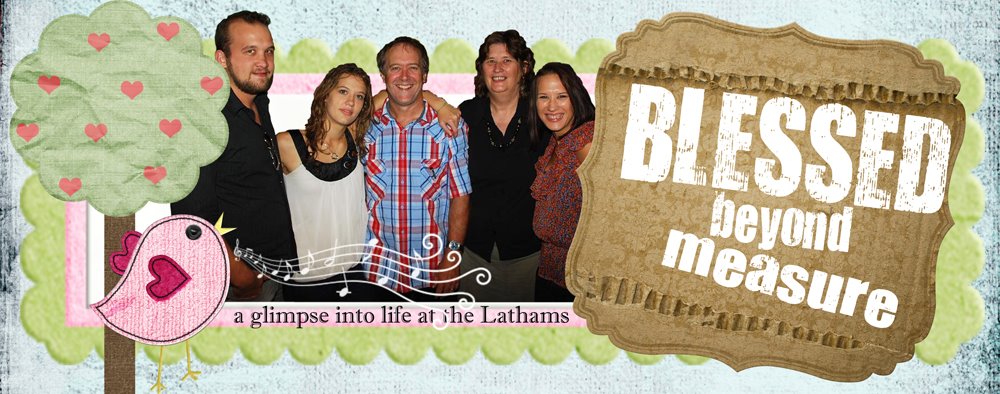














































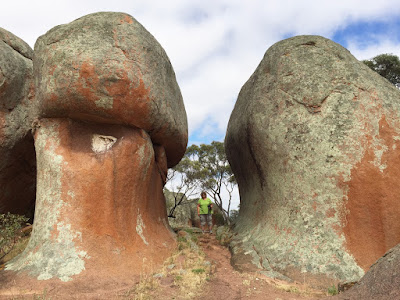


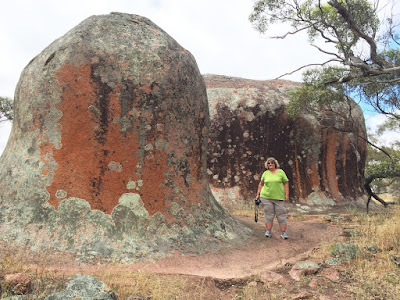












































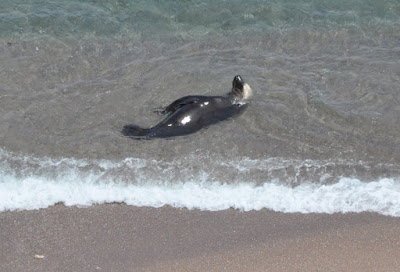























































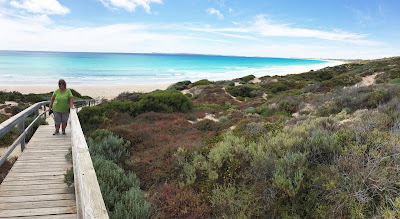




















































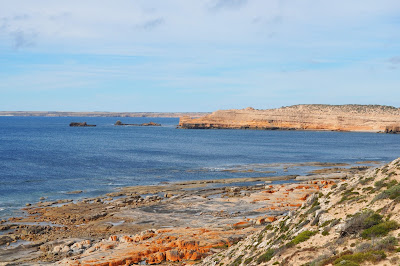




















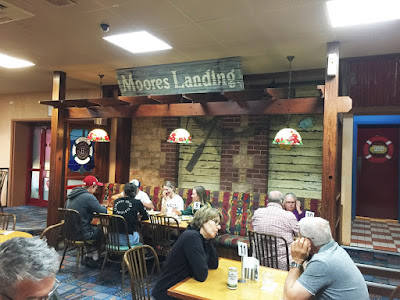


















0 comments:
Post a Comment